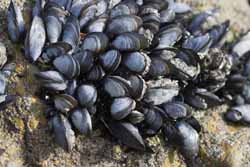Controlling mussel and oyster pathogens
International and intra-EU trade in cultured marine bivalves like mussels and oysters is on the rise, and this increases the risk of pathogen transfer. To ensure sustainable aquaculture in Europe, the health of farmed shellfish populations must therefore be a priority. The EU-funded project 'Controlling infectious diseases in oysters and mussels in Europe' (BIVALIFE)(opens in new window) provided the industry with new insights into bivalve diseases, along with practical control strategies. It focused on the most important production species: the Pacific oyster (Crassostrea gigas) and two mussel species, namely Mytilus edulis and Mytilus galloprovincialis. Researchers improved the efficiency of disease diagnosis, and they developed means to eradicate pathogens in bivalve hatcheries. They also implemented ultraviolet treatments to inactivate disease-causing agents in live feed without affecting the feed itself. The project brought various EU research organisations, laboratories and smaller businesses focused on controlling infectious diseases together for a more integrated approach. This resulted in increased capacities and knowledge about pathogen life cycles, as well as environmental and farm risk factors. BIVALVE thus strengthened the competitiveness of the European shellfish production sector, ensuring a steady supply of seafood to consumers.







